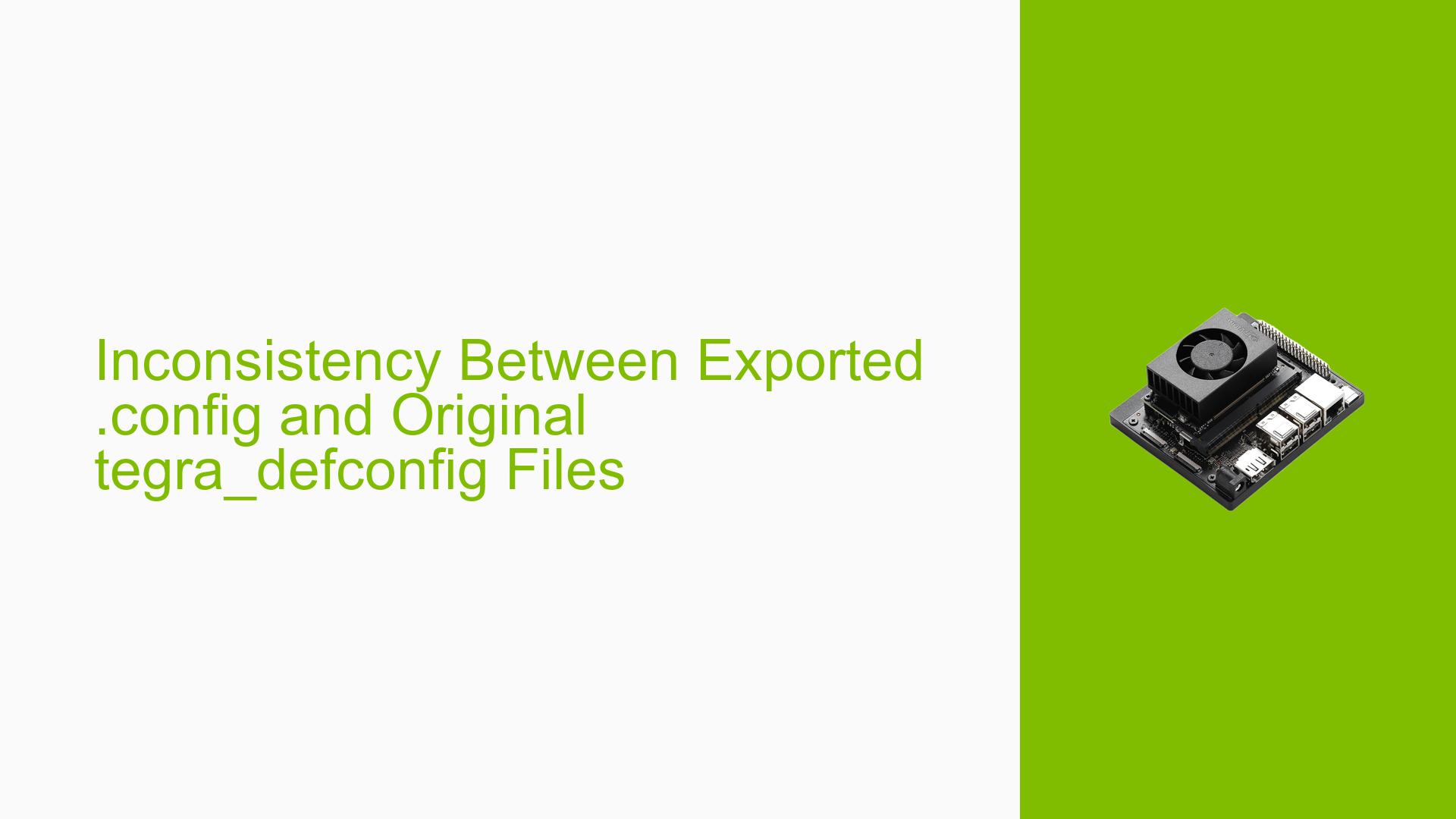Inconsistency Between Exported .config and Original tegra_defconfig Files
Issue Overview
Users are experiencing confusion when working with kernel configuration files for the Nvidia Jetson Orin Nano development board. Specifically, the issue arises when exporting the .config file using the make ARCH=arm64 O=$HOME/kernel-output tegra_defconfig command. The exported .config file differs significantly from the original tegra_defconfig file in both size and content:
- Original tegra_defconfig: 33K in size, 1392 lines of content
- Exported .config file: 224.3K in size, 8551 lines of content
This discrepancy occurs even when following the official Nvidia documentation for kernel customization. Users are concerned about how to obtain the correct original configuration and ensure their modifications are applied correctly when compiling the kernel.
Possible Causes
-
Normal Behavior of Kernel Configuration System: The difference in file sizes and content is actually expected behavior. The defconfig file only contains configurations that differ from the default settings specified in Kconfig, while the .config file includes every single configuration option combined from both the defconfig file and all Kconfig files.
-
Misunderstanding of Configuration File Purposes: Users may not be aware of the different roles and contents of defconfig and .config files in the kernel build process, leading to confusion about the apparent discrepancies.
-
Incorrect Expectations: Users might expect the exported .config file to be identical to the original defconfig file, which is not the case due to the way kernel configuration systems work.
Troubleshooting Steps, Solutions & Fixes
-
Understanding Configuration Files:
- Recognize that the difference between defconfig and .config files is normal and expected.
- The .config file is a comprehensive configuration that includes all settings, while defconfig is a minimal file containing only non-default settings.
-
Modifying Kernel Configuration:
- Use
menuconfigto modify the kernel configuration as desired. - After making changes, save the configuration. This will update the .config file.
- Use
-
Applying Custom Configurations:
- To use your modified configuration, you have two options:
a. Rename the newly saved .config to defconfig and overwrite the original defconfig file.
b. Modify the config_file variable in the nvbuild.sh script to point to your new .config file.
- To use your modified configuration, you have two options:
-
Saving Custom Configurations:
- Use the
savedefconfigcommand to create a new defconfig file from your current .config. - This will generate a minimal configuration file containing only the changes from the default settings.
- Use the
-
Compiling with Custom Configurations:
- When compiling the kernel, ensure you’re using the correct configuration file:
- If you’ve overwritten the defconfig, use the standard build process.
- If you’re using a custom .config, specify it in the build command or update the nvbuild.sh script.
- When compiling the kernel, ensure you’re using the correct configuration file:
-
Verifying Changes:
- After compiling and installing the new kernel, check that your modifications have been applied correctly by examining the running kernel configuration or testing the specific features you modified.
-
Best Practices:
- Always keep a backup of the original defconfig file before making changes.
- Document your modifications for future reference.
- When in doubt, use the
savedefconfigcommand to create a new, minimal configuration file that captures your changes.
By following these steps and understanding the relationship between defconfig and .config files, users can successfully customize and compile the kernel for their Nvidia Jetson Orin Nano development board while ensuring their modifications are correctly applied.
